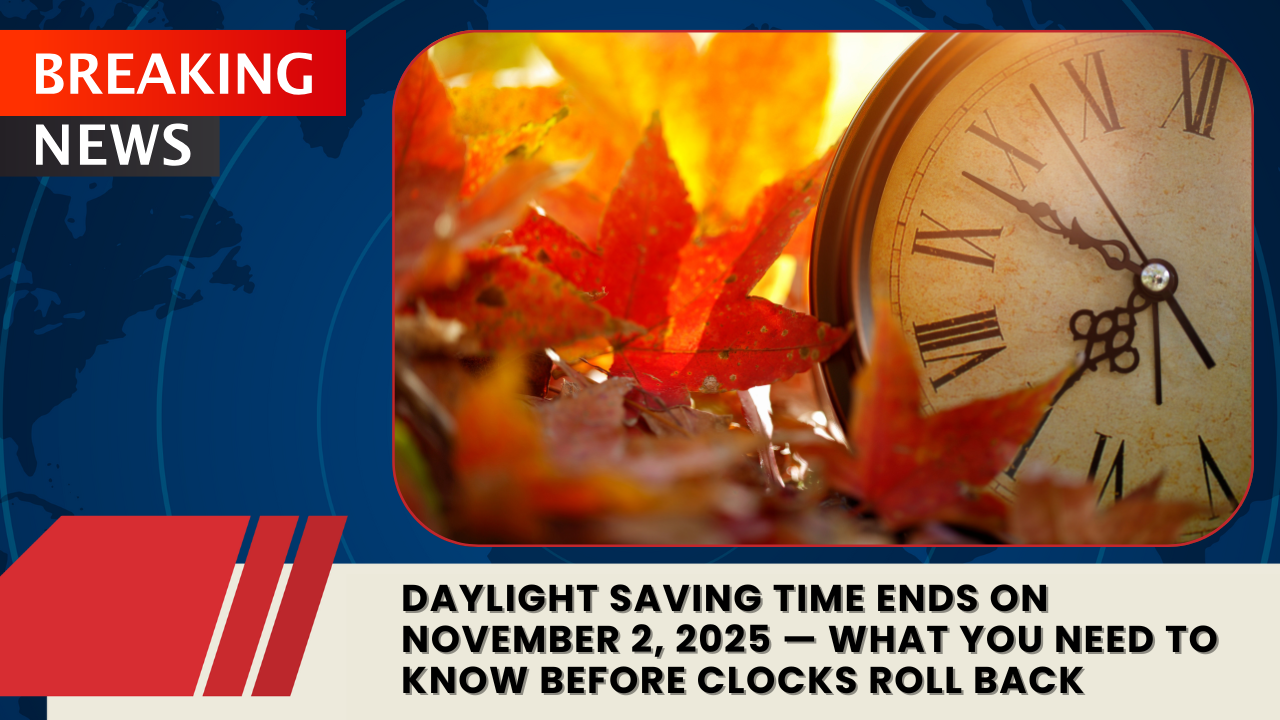Daylight Saving Time Set to End Soon
It’s that time of year again when Americans prepare to adjust their clocks — and their sleep schedules. Daylight saving time (DST) will officially end on Sunday, November 2, 2025, at 2:00 a.m., when clocks will be set back one hour across most of the United States.
This annual change means an extra hour of sleep for many, but it also signals shorter days and earlier sunsets as the country transitions back to standard time (ST) for the colder months.
What Is Daylight Saving Time?
Daylight saving time (DST) is the practice of moving clocks one hour ahead during the warmer months to make better use of daylight in the evenings. In essence, the change shifts one hour of daylight from the morning to the evening.
The concept dates back to 1918, when the United States first adopted it as a measure to conserve energy during World War I. Since then, DST has remained part of American life, despite periodic debate about its usefulness.
The familiar phrase — “spring forward, fall back” — serves as an easy reminder:
- In March, clocks are moved forward one hour to start DST.
- In November, clocks are moved back one hour to return to standard time.
The U.S. Department of Transportation oversees time zones and daylight saving transitions, while the National Institute of Standards and Technology (NIST) ensures time accuracy nationwide.
When Does DST Start and End?
In the United States, daylight saving time begins at 2:00 a.m. on the second Sunday of March and ends at 2:00 a.m. on the first Sunday of November each year.
For 2025:
- Start of DST: Sunday, March 9, 2025 (clocks move forward one hour)
- End of DST: Sunday, November 2, 2025 (clocks move back one hour)
Who Does Not Observe Daylight Saving Time?
While most of the country participates in DST, some U.S. regions opt out:
- Hawaii
- American Samoa
- Guam
- Puerto Rico
- The U.S. Virgin Islands
In addition, most of Arizona does not observe DST — except for the Navajo Nation, which continues to participate due to its sovereignty and territory extending into other states that observe the practice.
The Legal Framework Behind DST
The Uniform Time Act of 1966 standardized daylight saving time transitions across the U.S., setting nationwide start and end dates for participating states. However, the law allows individual states to opt out of observing DST through state legislation.
Congress has also made several amendments to DST over the decades:
- 1986: Start date moved to the first Sunday in April.
- 2007: Extended DST by about one month, now beginning in March and ending in November.
These changes were made primarily to conserve energy, reduce traffic accidents, and promote outdoor activity during the lighter evening hours.
The Debate Around Daylight Saving Time
Despite its longevity, daylight saving time remains controversial. Supporters argue that DST promotes energy savings and outdoor recreation by extending daylight in the evenings. Critics, however, contend that the biannual clock changes disrupt sleep patterns, increase workplace fatigue, and offer minimal energy benefits in the modern era.
In recent years, several states have considered legislation to make daylight saving time permanent, eliminating the need to “fall back” or “spring forward.” However, federal approval would be required for such a change.
How to Prepare for the Time Change
As the time shift approaches, here are a few reminders to make the transition easier:
- Change your clocks: Most digital devices adjust automatically, but analog clocks may need to be reset manually.
- Check your smoke detectors: Many fire departments recommend replacing batteries in alarms during DST changes.
- Adjust your schedule: Go to bed slightly earlier the night before to help your body adapt.
The Bottom Line
On November 2, 2025, daylight saving time officially ends — bringing brighter mornings and darker evenings across most of the United States. Whether you see it as an outdated practice or a cherished tradition, DST continues to shape how Americans manage their time and energy throughout the year.



